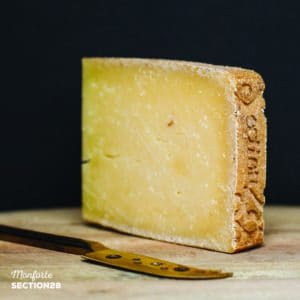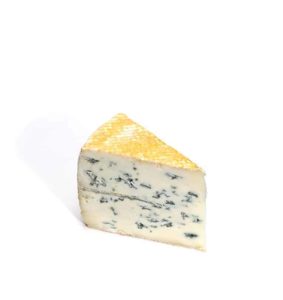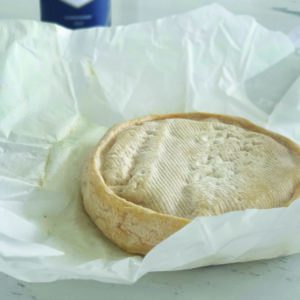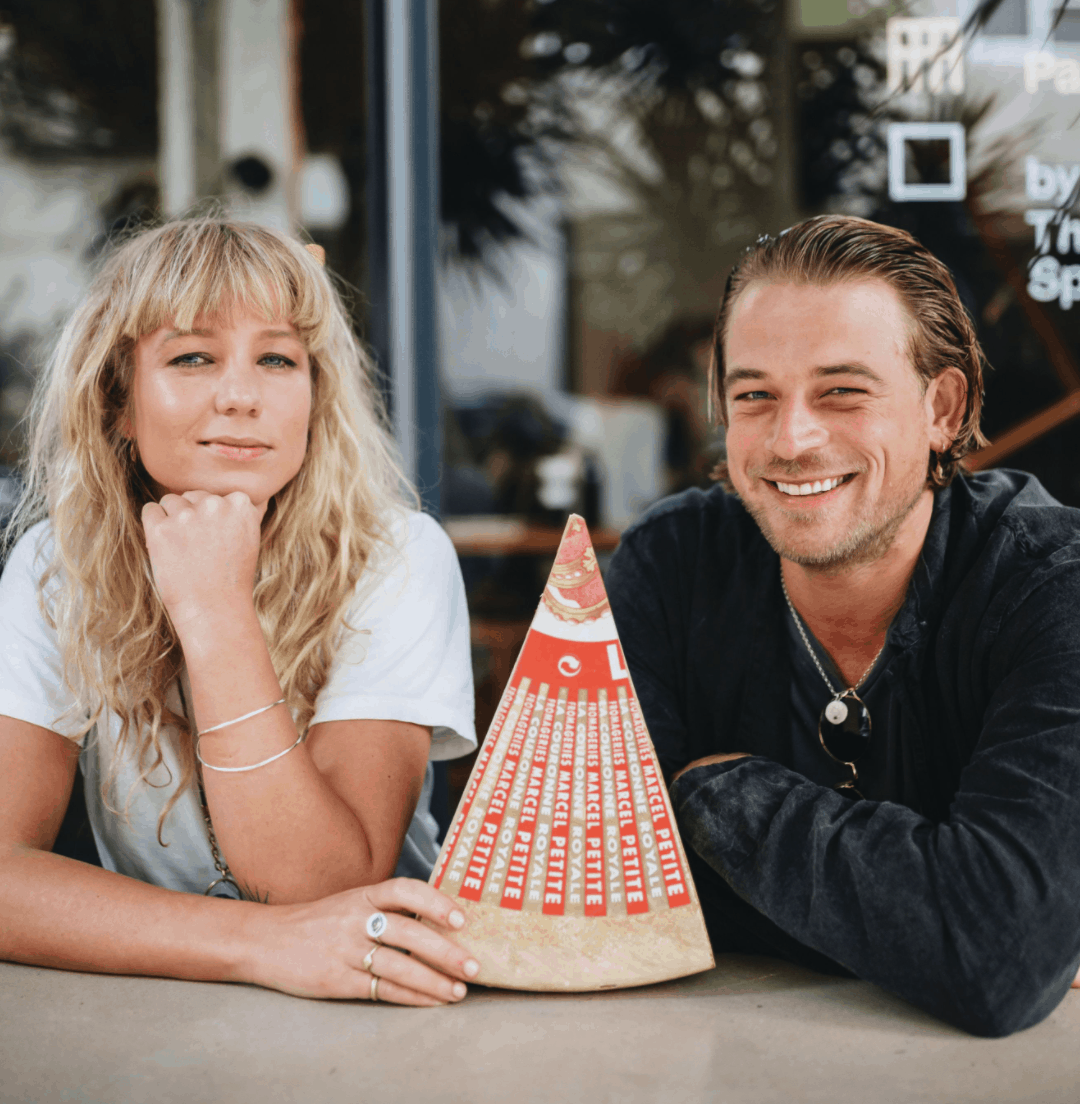
In the international cheese world, Will Studd is a rebel with a cause; an outspoken, passionate cheese expert who famously persuaded the Australian government to lift a ban on raw milk cheese imports and continues to advocate for artisanal cheese. Some might not recall the hard-fought, multi-year battle Studd finally won in 2009, but Ellie and Sam Studd are making sure the cause stays top-of-mind for the next generation. Known professionally as the Studd Siblings, the younger two of Will’s three children were not simply handed the keys to the cheese cave. Both deeply knowledgeable and infectiously charming, the siblings—who finish each other’s sentences as if they were twins—are ACS Certified Cheese Professionals and members of the International Guilde de Fromagers. They have appeared in their father’s TV series, Cheese Slices, are regular contributors to Delicious magazine, and play a key role in choosing the cheeses for the “Selected by Will Studd” range. I spoke with them over Zoom—and had to fight the urge to immediately hop on a plane and go hang out with them.
This interview has been edited for length.
culture: What are your earliest cheese memories?
SAM STUDD: I would have been about 3 and Ellie about 9. Will had an import and distribution business in Melbourne and was constantly bringing in new cheeses…they were always in the fridge. I remember him giving us tastes of them and telling their stories.
ELLIE STUDD: He used to do it in the laundry for some reason—he’d sit us up on the big freezer in there and say, ‘What do you think of this?’ and it was something like Boursin which we thought was kind of special at the time. Even today you open the fridge and the cheese spills out at you. An overflowing fridge with big wheels of cheese—that was a norm that we grew up in.
SS: We spent a lot of our school holidays in Europe (when I say that out loud it is so ridiculous). In England, we’d go and stay with Randolph Hodgson from Neal’s Yard Dairy…
ES:…you’d go to Neal’s Yard, and get your cheese toastie from Borough Market, you’d get your Monmouth Coffee [owned by Hodgson’s wife Anita Leroy], and dad would be chatting with Randolph…we’d be sent off with the kids.SS:And if you think about the dynamics of the world then, there was no internet, so going to Europe and having that handshake, dinner, sitting down with the family and talking about where we were going to take their cheese, that’s how it was done.
ES: At school report time dad would say, ‘take the cheese to school.’ Our school bags would be jammed full of cheese. I remember having stinking Camembert and getting teased, but the teachers loved it and we got good reports.
It’s often the eldest child that ends up in the family business, but your elder sister, Fleur, went into the coffee industry. What inspired each of you to follow in your dad’s footsteps?
SS: We both had to go out and discover what was out there, and there was never any family pressure whatsoever—in fact it might have been the opposite. I did that typical finish school, travel-and-find-myself thing. I found myself in New York City and started working at Murray’s Cheese, which gave me the opportunity to explore the world of cheese outside of Will’s shadow. I can remember walking in there and being overwhelmed with the hundreds of cheeses they had in that case. After that I couldn’t seem to get ou tof it. I spent some time at Jasper Hill making cheese and then came back to Australia and made cheese in a hippie town called Nimbin. One morning I went out at five to go to the bathroom, and there was a giant spider in the corner and a giant python wrapped around the toilet and I thought ‘I’m not sure I want to make cheese anymore.’ I reached out to Will and he said, ‘Yeah, but if you want to do it, you’re going to have to prove yourself.’
ES: Quality, quality, quality was driven into all of us from such a young age. For Fleur, it’s all about the coffee, and for us, it’s all about the cheese. We had to do our own alchemist journey; we had to find that spark. I was a pediatric nurse for 10 years but kept kind of tuning in to the fact that there was something missing—and it just kept coming back to cheese. That journey of seeing the world and doing other things and then coming home was an important thing for it to work. It was an intimidating career change. The moment when it clicked over for me was when we were in the Roquefort caves, and dad had some mold on his finger and he was saying “Look, this is where all blue cheese comes from,” and for me it was on.
SS: Since we were children, we’d always seen the world through the lens of food, so wherever we were, the way our family has always bonded and communicated and told stories has been over food. When we had the opportunity to go on with Cheese Slices and experience that, it really resonated with us. Explaining history, stories, culture—everything that is important that excites us—through this one vessel that is cheese. There is a story behind every single process, every single aspect, and I think our heads just exploded.
ES: We always describe dad as the David Attenborough of cheese, he’s saving the endangered cheese of the world and has such strong messaging about saving artisan cheese. A moment that clicked over is that this fight is not over, it’s now our responsibility; we are the revolution, and we have to keep telling these stories. We are responsible to continue the legacy.
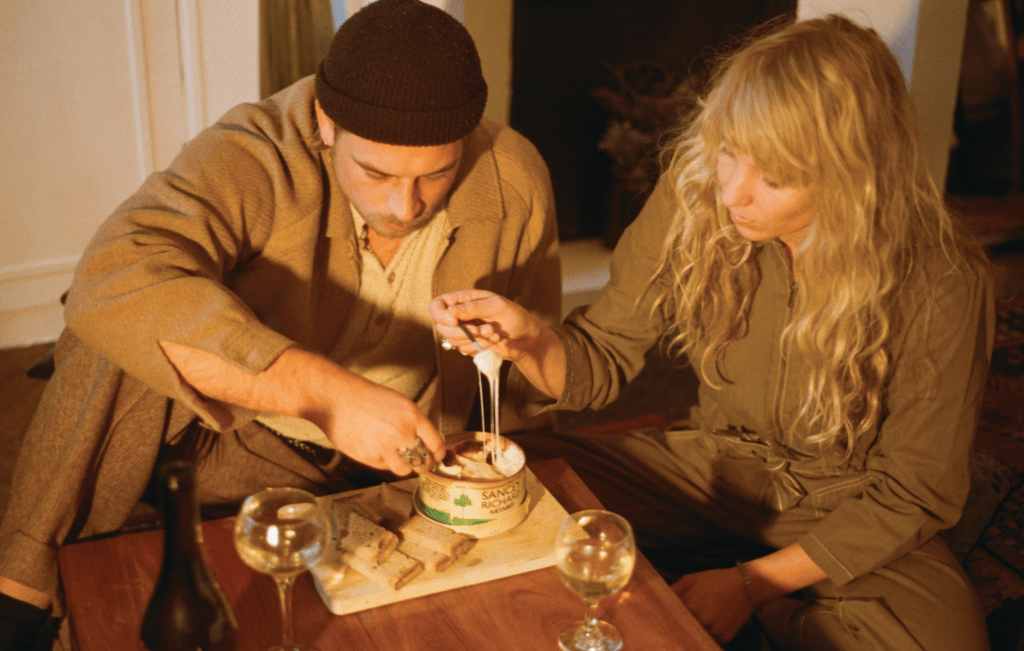
You’ve been mentored by some big names in American artisan cheese. What was especially meaningful about that experience?
SS: Cathy Strange [global cheese buyer, Whole Foods] is a family friend and such a powerhouse of a woman. She’s articulate, passionate, and honest about what is OK and what is not OK in terms of animal welfare and additives to cheese. And David Gremmels [Rogue Creamery]…and Carlos Yescas..
ES: … Andy Hatch [Uplands Cheese] and Peg and Sue from Cowgirl Creamery as well. Cheese rockstars. When you’re with them they teach you in a way that you’re on the same plane. They’re not above you. We went to Italy with Cathy a couple of years ago; she talked about the questions we should be asking: What is your oldest animal; what is your favorite animal’s name; what are you tasting in the cheese? These have become the blueprint for what we ask farms. She’s been such an amazing mentor. When you’re with Mateo [at Jasper Hill Farms] and he’s picking up the hay and saying, ‘look at the moisture.’ Seeing their passion is very infectious.
SS: One thing that’s amazing about cheese is that it’s a really inclusive family environment. We’ve been blessed by the introduction through Will, but we’ve also been brought up in an environment where asking questions was encouraged. And I appreciate that, with all the mentors we’ve had, I’ve never felt belittled by asking a question. For me it’s about education and the transfer of knowledge that’s been handed down by these weird and wonderful people who came together and bonded over this one beautiful thing that has a narrative and a story.
How has your involvement in the business impacted its overall direction?
SS: Delicious has been an excellent way for us to extend the knowledge that we’ve collected over the years. Me and Ellie getting so involved, working together and having that relationship with our dad, which is really beautiful, has reinvigorated Will to an extent as well. It’s reinvested another wave of passion in him.
ES: Showing Will how to use his social media platforms to reach his audience, and Sammy and me bridging the gap to tell the same story in a new way—Instagram Reels, Instagram TV—connecting to the younger generation and letting them know why they should care about this.
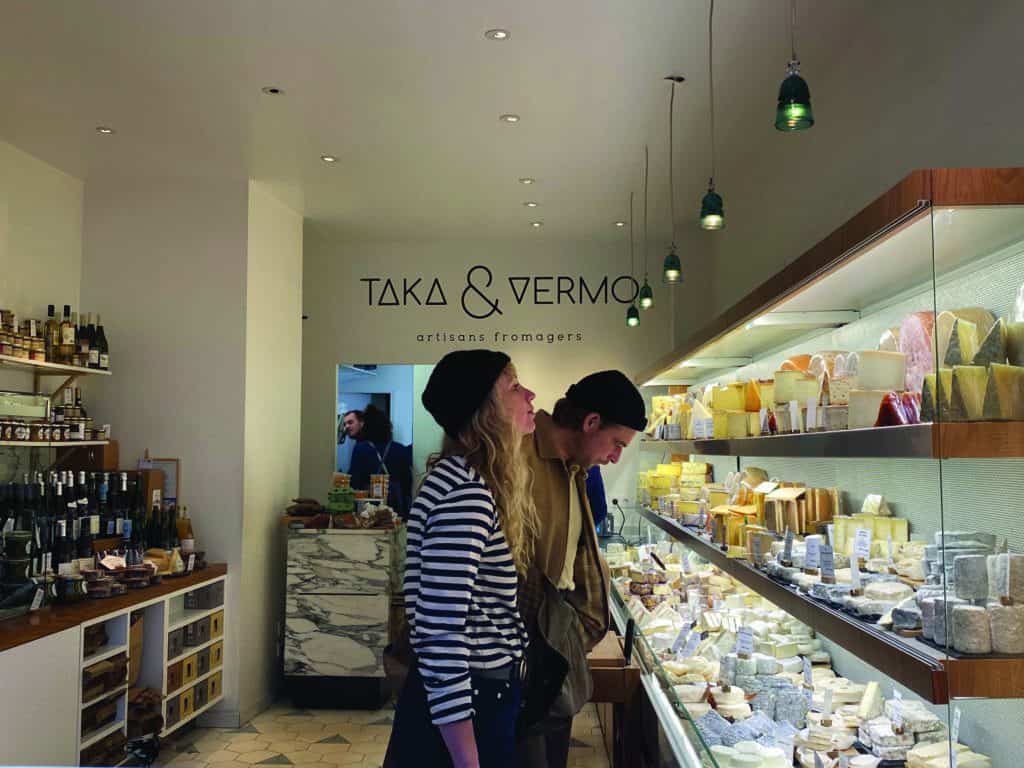
How do you choose the cheeses for the “Selected by Will Studd” range?
ES: Selecting the cheese is now a family decision. Will is still the master, but it has to get past us too. We pick cheeses that we believe are the best in class and have distinctive points of difference. We mainly work with family run farms, which is the fun bit—for our halloumi we go to Cyprus and hang out with the cheesemaker’s kids and family. And then preserving traditional cheesemaking methods.We want the best within class. We’re bringing back this shepherd’s cheese called Galotryi, which we discovered by accident when we were visiting our feta producers in Greece. They had a lunch, and it was off on a side table and then …
SS: …that’s not how it went … They have great hospitality over there; they kill a lamb and you drink, like, six bottles of wine, by the end of it you feel like you don’t want to do anything for a week because you’ve eaten so much meat. The producers we were hanging out with said, ‘Hey, try this cheese; it’s a digestive.’ It’s a lactic-style cheese that the shepherds used to make like a labneh, they would put it in a muslin cloth and leave it in a mountain stream; as the lactic fermentation continues it develops this amazing probiotic in the cheese. After WWII it disappeared. Our producers had been working with grandmothers to bring it back.
ES: Will hadn’t even heard of it. It’s fun bringing new—well old—cheese back to the market. It’s the one that we feed everyone at the cheese shows. ‘Had too much cheese? Here, have some Galotyri…’
What is the one cheese you would each take with you if you were going to be marooned on a desert island, or launched into space?
SS: Mine would 100 percent be Comté.
ES: Same. It’s one thing we both agree on.
What do you think is the most important issue or challenge facing the artisan cheese industry today (other than the pandemic)?
SS: For me it’s the battle with raw milk, and the opportunity for small, artisanal cheese producers both in in Australia and in America to have access and opportunity to compete with their European counterparts and produce really amazing raw milk cheese that’s a true reflection of place—rather than relying on industrial or non-industrial cultures to create a sense of place. My biggest fear is that if regulations tighten or if the fight doesn’t continue, we’ll continue to see small producers disappear. Two-thirds of all Australian family-run dairy farms have disappeared in the last 20 years. There is a social hierarchy that seem set on destroying biodiversity, not just on pastureland but in terms of what’s available to you. It’s a scary future but one that can be prevented.
ES: I completely agree with Sammy. We all know that artisan cheese is about a genuine sense of place—the taste, the texture, the aroma. With both the big guys and the little guys using commercial starters, the link will disappear to what raw milk cheese should taste like. It’s a battle of science. There’s a risk of the biodiversity of cheese fading. It comes with the animal breeds decreasing, it comes with the feed, it comes with the cultures—it’s all those things.
SS: In Australia and the U.S. small artisanal producers are still a grass-roots movement. They have access to large markets because of the public’s increasing interest in where their food comes from, but it’s important to recognize that it’s something we need to cherish and preserve. Will wears a T-shirt all the time that says, ‘Eat Like an Idealist,’ —it’s something that really resonates with me.
ES: As humans, we’re sort of cursed because we crave the predictable and the familiar. We need to keep educating the consumer about seasonality and that cheese does vary in flavor. We have to reignite the other part of human behavior that is craving adventure and the unfamiliar.
What has been the biggest surprise for each of you about your career in cheese?
ES: Mine’s not really a surprise. I’m just grateful for the limitless learning. Cheese is such a magical mystery and an infinite source—you’re always learning.
SS: How inclusive this society is that’s built on thousands of years of tradition, but in the new world is honest and fair. You can sit down at a table and everyone’s grinning ear to ear, and it’s like ‘How good is cheese?’ How that passion transcends into your every day. And how it becomes so ingrained in your identity—I’m a cheese guy—I’ve never felt such a passion.
AUSTRALIAN CHEESES: THE STUDD SIBLINGS’ PICKS
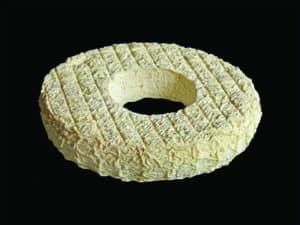 LA LUNA: The holy grail of Australian goat cheese is Holy Goat in Sutton Grange, Victoria, where Carla Meurs and Ann-Marie Monda make a spectacular range of organic goat cheeses. The single herd of well-pampered and individually named Saanen and British Alpine goats happily nibble on native and perennial grasses, herbs, flowers, and shrubs. Hands down the best goat cheese in Australia, La Luna looks like a giant Life Saver candy (three pounds), covered in geotrichum, and it delivers everything you want in a goat cheese—it’s velvety, tangy, and elegantly herbaceous. A true reflection of fine farmhouse cheesemaking skills that tell a story of the Australian bush.
LA LUNA: The holy grail of Australian goat cheese is Holy Goat in Sutton Grange, Victoria, where Carla Meurs and Ann-Marie Monda make a spectacular range of organic goat cheeses. The single herd of well-pampered and individually named Saanen and British Alpine goats happily nibble on native and perennial grasses, herbs, flowers, and shrubs. Hands down the best goat cheese in Australia, La Luna looks like a giant Life Saver candy (three pounds), covered in geotrichum, and it delivers everything you want in a goat cheese—it’s velvety, tangy, and elegantly herbaceous. A true reflection of fine farmhouse cheesemaking skills that tell a story of the Australian bush.
BREWER’S GOLD : Husband-and-wife cheesemakers Burke and Bronwyn Brandon milk their 160 Coopworth, Dorset, Corriedale crossed with East Friesian ewes on the lush green pastures of their 76-hectare property in Prom Country, Victoria. Prom Country Cheese makes a selection of ewe’s and cow’s milk cheeses, including Moyarra, a semi-hard raw sheep’s milk cheese that is one of just a handful of raw milk cheeses available in Australia. Our favorite, however, is the seasonal washed-rind cow’s milk cheese, Brewer’s Gold. A collaboration with the Brandons’ neighbors at Loch Brewery, this lactic set cheese is washed in beer and then encased in a sunshine-colored rind. At first, Brewer’s Gold melts in your mouth with melted butter notes, then the flavor slowly intensifies to cured meats and a mild, signature washed-rind funk.
: Husband-and-wife cheesemakers Burke and Bronwyn Brandon milk their 160 Coopworth, Dorset, Corriedale crossed with East Friesian ewes on the lush green pastures of their 76-hectare property in Prom Country, Victoria. Prom Country Cheese makes a selection of ewe’s and cow’s milk cheeses, including Moyarra, a semi-hard raw sheep’s milk cheese that is one of just a handful of raw milk cheeses available in Australia. Our favorite, however, is the seasonal washed-rind cow’s milk cheese, Brewer’s Gold. A collaboration with the Brandons’ neighbors at Loch Brewery, this lactic set cheese is washed in beer and then encased in a sunshine-colored rind. At first, Brewer’s Gold melts in your mouth with melted butter notes, then the flavor slowly intensifies to cured meats and a mild, signature washed-rind funk.
MONFORTE: Kym Masters from Section 28 is a small artisan producer whois passionate about capturing the essence of the Adelaide Hills terroir in his Alpine-style cheeses. His flagship cheese is the 10kg Monforte, a raw semi-hard cow’s milk cheese with a brine-washed natural rind. Large by Australian standards, the wheels are made and matured in shipping containers repurposed as “cheese caves.” Aged up to six months, Monforte is multidimensional, dancing with notes of butter, toasted hazelnuts, beef broth, and stewed stone fruit.
RIVERINE BLUE: In Gippsland, Victoria, Berrys Creek makes one of Australia’s best and most unique buffalo blue cheeses, which originates from a small herd of water buffalo. This cheese has an ivory soft and creamy-yet-flaky texture, with green and blue veining that could be stolen from the northern lights sky. It’s buttery, minerally, and slightly sweet with a hint of cashew, making it probably the most moreish cheese on this list!
MOUNTAIN MAN: L’Artisan cheese is made in a small purpose-built cheesemaking facility located just outside of Geelong, Victoria. Matthieu Megard is a third-generation French cheesemaker who has adapted traditional French recipes to create his organic, handmadeAustralian cheese range. We love Mountain Man, a delicate washed-rind cheese made from Jersey milk that was inspired by the French Reblochon. Unfurling with some satisfying umami and bacon flavors, it’s deliciously complex and balanced


